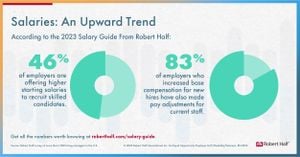A Novel Multi-instance Learning Framework Enhances Depression Detection Through Text from Clinical Interviews
A new study presents advancements in early depression detection methods, focusing on the application of multi-instance learning techniques to process clinical interview data.
Depression is becoming increasingly prevalent globally, especially among adolescents. The World Health Organization (WHO) reports rising rates, with projections indicating alarming increases by 2024. Early detection is pivotal as it typically leads to improved patient outcomes, but traditional methods often fall short due to their reliance on self-assessments and potentially biased evaluations made during clinical encounters.
To address these limitations, researchers from the University of Southern California implemented the multi-instance learning (MIL) framework to extract actionable insights from text data gleaned from clinical interviews. Their method distinguishes itself by enhancing both accuracy and interpretability, two aspects often neglected by existing techniques.
Traditional approaches for diagnosing depression may overlook important subtleties present within longer texts, such as whole patient interviews. Existing methods typically analyze responses as single entities rather than breaking them down to understand individual components and their emotional weight. This new approach directly addresses these issues by allowing for the nuanced examination of multiple segments of interview data, treating each response as part of a larger, meaningful whole, or “bag.”
“This research offers the first application of multi-instance learning to the analysis of interview data for detecting depression more efficiently,” the authors stated. This framework supports independent feature extraction for each response, which not only enhances the model's capacity to recognize sentiment variability but also mitigates sample imbalance by ensuring all instances contribute to the final classification results.
The researchers developed the Multi-MTRB model, which integrates two pre-trained models: MT5 and RoBERTa. The innovative combination of these two models allows the framework to leverage different contextual interpretations offered by each algorithm, honing their focus to extract features central to detecting depressive tendencies.
Evaluation of this new MIL framework was conducted using two substantial datasets, DAIC-WOZ and E-DAIC, which comprise transcribed clinical interview recordings. The model demonstrated impressive performance, achieving F1 scores of 0.88 and 0.86, indicating its reliable recognition capabilities. The integration of improved aggregation strategies, including hyper-parameter adjustments, significantly enhanced interpretability, allowing clinicians to understand and trust the model’s predictions.
“Our findings indicate significant potential for improved interpretability, making the model more trustworthy for clinicians during diagnosis,” they added. This emphasizes the framework's advantage; it not only predicts outcomes but also clarifies which responses contributed most to the diagnosis, thereby aiding clinical decision-making.
The study highlights how combining advanced computational techniques with traditional assessment methods can forge paths toward more effective mental health interventions. The approach aims to empower healthcare providers, ensuring they can detect early signs of depression effectively—especially important for noticeable demographic rises expected within the adolescent population over the coming years.
Looking forward, researchers advocate for continued refinement of the model, potentially incorporating additional modalities—such as audio or visual data—to create even richer datasets for analysis. Integrative methods may pave the way for more comprehensive and accurate diagnostic tools capable of recognizing the subtle emotional cues indicative of depression.
Improving the detection of depression not only benefits clinical outcomes but also fosters higher overall quality of care, promoting well-being among affected populations.



